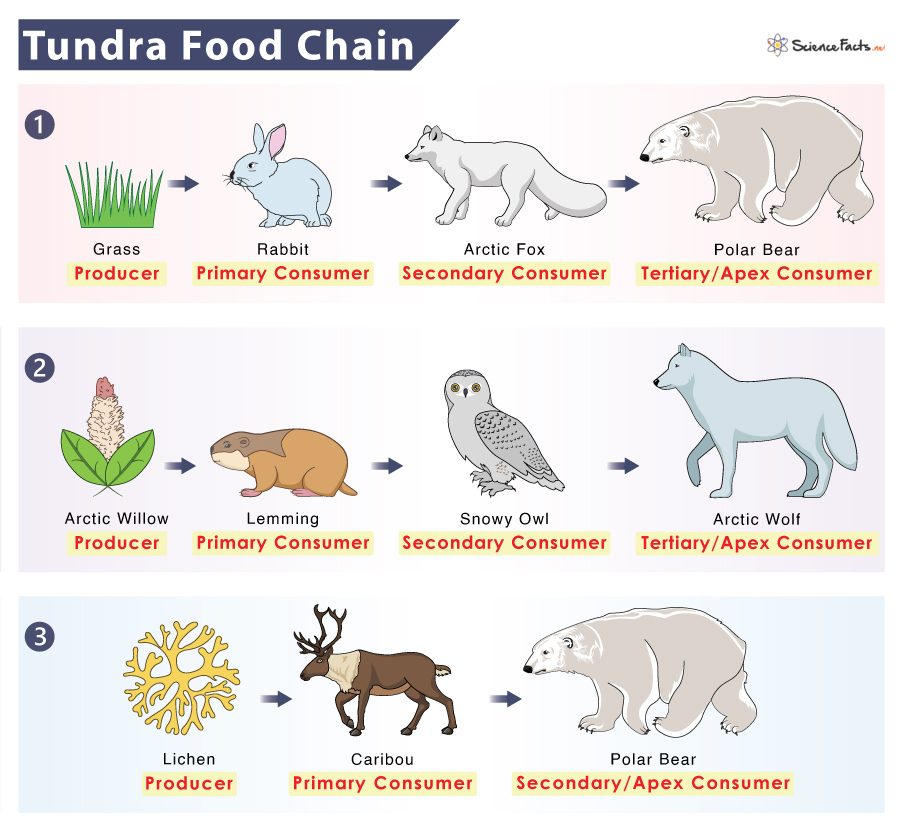arctic tundra food web Google Search Biology Diagrams Snowy owls, wolverines, and Arctic wolves-the tertiary consumers in tundra food chain-feed on Arctic hares and reindeer to fulfill their energy requirement. Even though a major chunk of the diet of this gray wolf subspecies consists of reindeer, it is also known to feed on small mammals and even on snowy owls at times.

The lichens, mosses, and small shrubs constitute the producers of the arctic tundra food chain. Plant-eating animals (herbivores), such as caribou, musk ox, lemmings, and arctic hares, act as primary consumers. Secondary consumers are mostly omnivores from different trophic levels of the food chain. Caribou, Musk Ox, and Arctic hares are some

Key Contributions Of Reindeer In Arctic Ecosystem Biology Diagrams
The different groups of organisms in a basic Tundra food chain are: Producers. They eat plants such as lemmings, musk ox, reindeer, squirrels, voles, and arctic hares. Mosquitoes, flies, moths, grasshoppers, arctic bumble bees, other insects, and birds such as ravens, falcons, and gulls are also found in this trophic level. Explore the tundra food web, detailing the roles of producers, herbivores, and apex predators. Role - A symbiotic relationship between fungi and algae that supports herbivores such as reindeer and Arctic hares. Adaptations. linking the roles of decomposers and primary consumers within the food chain. Type Examples Role in Ecosystem The food chain is the backbone of this ecosystem, and it starts with the primary producers. Understanding how each organism in the food chain is connected is essential to understanding the complex tundra biome. 2. What is a Food Chain? A food chain is a series of organisms that are interdependent on each other for food.

The example below shows the energy flow in a basic food chain in The Tundra. This food chain is part of a more complex food web involving producers and consumers (herbivores, carnivores, and omnivores). Producers here include grasses, lichens, and caribou moss. Herbivores that eat these plants include the musk ox, arctic hare, and lemmings. Reindeer grazing directly impacts the composition of the Arctic tundra by selectively feeding on shrubs, curbing their expansion, and allowing herbaceous species to flourish. thereby reinforcing the intricate web of the Arctic food chain. Additionally, reindeer serve as a primary food source for key predators such as wolves and bears. This Lower-Middle of the Arctic Tundra Food Chain. The lower-middle Arctic food chain consists of moose, caribou, reindeer, Arctic tern, and other birds, dalls sheep, muskox, snowshoe hare, lemmings, beavers, squirrels, voles, shrews, wood frogs, white fish, salmon, and other fish. If the lower middle tier didn't exist, the top and upper-mid of
